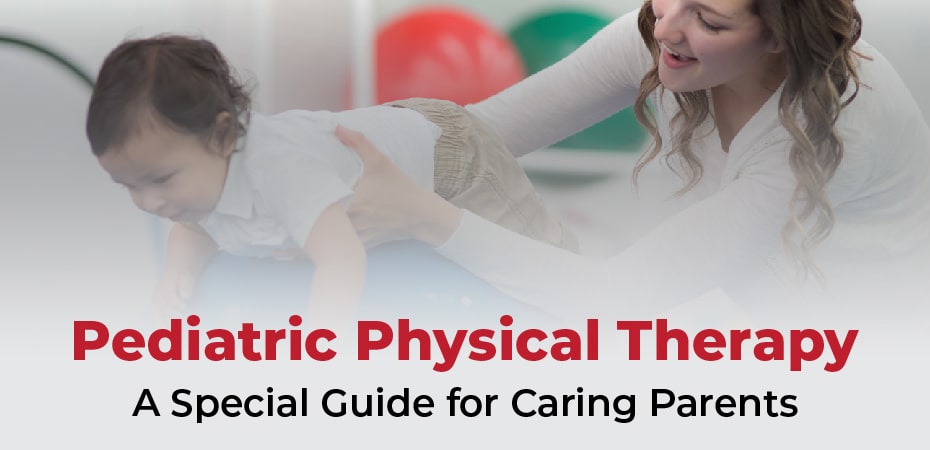Table of Contents
Pediatric Physical therapy may be related to children, as this form of treatment has probably been very effective and successful in treating the conditions also adults often face. However, the benefits of physiotherapy exceed those of children and adults. Physical therapy has also been shown to be very beneficial for babies, children, and adolescents.
According to the American Physical Therapy Association (APTA), physiotherapists are trained and experienced in identifying physical problems, recovering physical fitness, as well as mobility, maintaining physical fitness, and promoting exercise and proper functioning.
Qualified medical professional certified physiotherapists are available in many medical facilities, including ambulances, private clinics, medical facilities, rehabilitation facilities, home care, home care, sports activities, fitness facilities, hospices, professional facilities, and federal facilities institutions.
A physiotherapist assists patients in all phases of healing, from initial medical diagnosis to the corrective and preventive stages of recovery. Physical therapy can be used alone or in conjunction with various other therapies.
What is Pediatric Physical Therapy:
Pediatric physical therapy is the branch of physiotherapy treatment. It considers the health issue which affects the medical disorder in children. A trained pediatric therapist is available to treat & diagnose various disorders in a child such as developmental, neuromuscular, skeletal & congenital disorders. If the therapist focuses on therapy. The improvement in a child would be better in balancing coordination, strength, endurance, motor skills & cognitive functions.
There are many programs that therapist implements, and through this program, your child might be able to achieve independence, participate in different activities, enhance development skills, increase learning opportunity and make it easier for family members to provide care.

How to Become a Pediatric Physical Therapist:
The path to becoming a pediatric physical therapist typically involves obtaining the proper education, license, and specialization certification. Here are some steps you can take to become a great pediatric physical therapist:
- Get a bachelor’s degree with a high GPA because it increases your chance of getting your choice graduate program.
- Now, get your doctoral degree and gain research experience
- Complete your internship related to PTs under license physician
- Get your license to open your clinic to treat patients
- Get a speciality certification from a foreign country or authentic board.
What Does a Physical Therapist Do? – Paediatricians:
Pediatric therapists work with newborns to teenagers’ children. They need therapy for different reasons such as muscle issues, sports injuries, brain, genetic, or nerve disorders. Pead’s therapist has many years of experience with earning a degree as a doctor of physical therapy.
Paediatrics therapists help kids to improve the child’s movement patterns, strength, motion & flexibility. According to pediatric physical therapy, the therapist aims to help a child to move their body when and how they want a great for their abilities. They help to make every day easier for kids by performing various activities.
The Importance of Physical Therapy – For Childs:
Pediatric physical therapy is also called physiotherapy. It has a significant advantage in that children can benefit not only physically but also psychologically. When a child develops these skills well. It creates a more extraordinary form of independence that contributes to higher self-esteem. Children can benefit from physical therapy by strengthening their development and preventing injuries.
Children often do not understand why they are being treated. Play, family participation, and personal care can only be found in pediatric care for children. To make the treatment comfortable for the child, we incorporate fun and motivational factors into our functional activities. Nursing collaborations include orthotics, artificial limbs, adaptive equipment, bespoke wheelchair seating systems, and adaptive technology recommendations and training. In addition, Pediatric PTs provide family support such as service coordination, advocacy, and development assistance.
How to Know Your Child Need Pediatric Physical Therapy – The Signs:
Every parent is so anxious for their child to meet their following developmental skills. When will he or she start rolling and walking? But unfortunately, it is easy to compare your baby’s skills to other neighbours’ or relatives’ babies and start to worry that our baby has no that skill as other babies have.
There are so many factors related to a child’s development that one baby starts to walk at 10 months, and the other starts at 13 months. These are not medical issues that predict which baby is going to end up as a star athlete.
But it is time to worry, and you should talk to your child’s doctor. After that, you can refer your child for diagnosis by a specially trained child’s physiotherapist. With that in mind, here are six warning signs to watch out for pediatric physical therapy.
- If a baby prefers to turn only their head one side.
- Baby don’t put weight on their feet in 6 months.
- A baby doesn’t sit in 8 months & crawl in 18 months.
- Baby no longer walks in 18 months
- A child only walks on toes for more than 6 months.
How Pediatric Therapy Can Help My Child:
Pediatric physical therapy can be instructed to develop children’s motor skills such as sitting, crawling, walking, and balancing. Other problems that can be addressed include loss of mobility, flexibility, or strength, probably due to injury, illness, or surgery. Specially trained physiotherapists in pediatric illness develop programs to assess a patient’s specific needs and correct dysfunction.
Choices of Treatments:
- Nursing Staff / Patient Training
- Training for Functional Mobility
- Manual Therapy
- Stretching & range of motion exercises
- Proprioceptive / Balance Training
- Sprint / Taping Techniques
- A creative, fun, and skilful approach to helping people with strength and coordination deficits.
Pediatric Physical Therapy Exercises for Babies:
These baby exercises can help your baby strengthen his or her muscles and develop his or her skills. If you are thinking of exercising, then you will not tell your baby to fall and give you 20. Pediatric physical therapy baby exercise is an important part of a child’s development. However, infant exercise can strengthen the baby’s neck, develop hand-eye coordination, and help the baby learn to walk. So where do you start? From strengthening to baby yoga poses, it is time to move your baby with these baby exercises.
- Baby Yoga Exercise – it is efficient movement and can also improve your baby’s sleep.
- Happy Baby – this exercise helps the baby to open up hip muscles & stimulate digestion
- Downward Facing Dog – These poses help with flexibility, motor skills & general crankiness.
- Baby Neck & Tummy Exercise – These enable the baby to begin self-sufficiency and to explore the world around them.
- Tummy Time – This activity is always in the top 10 list of baby exercises because it helps to strengthen the muscles in the head and neck.
- Football Hold – They are working on their neck muscles.
- Peanut Ball Exercise – This will assist them in becoming familiar with withholding their necks and heads up.

